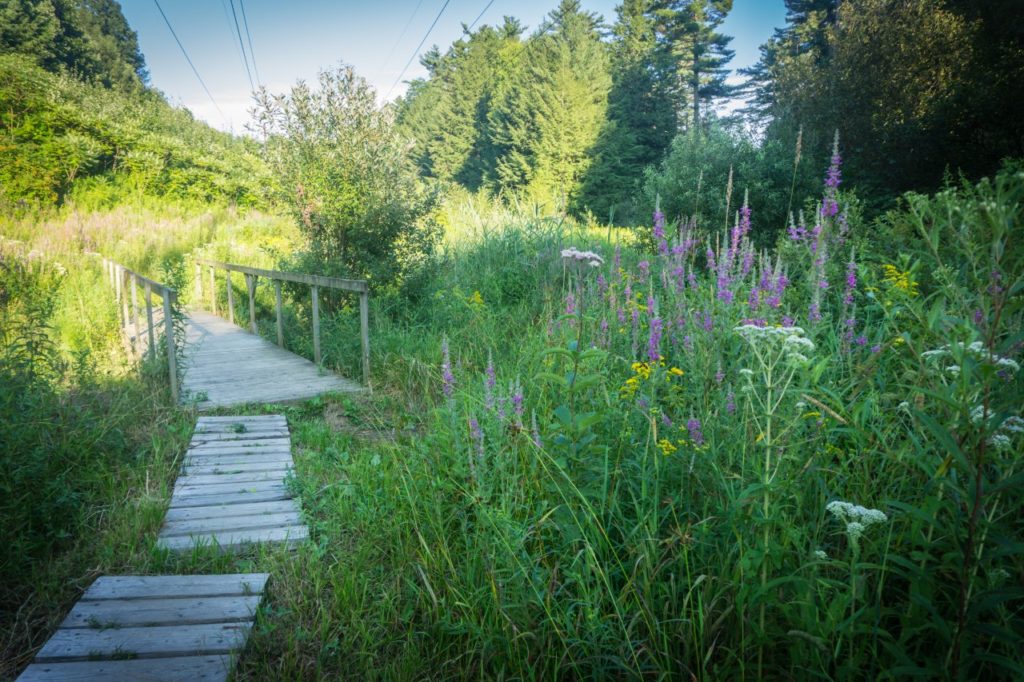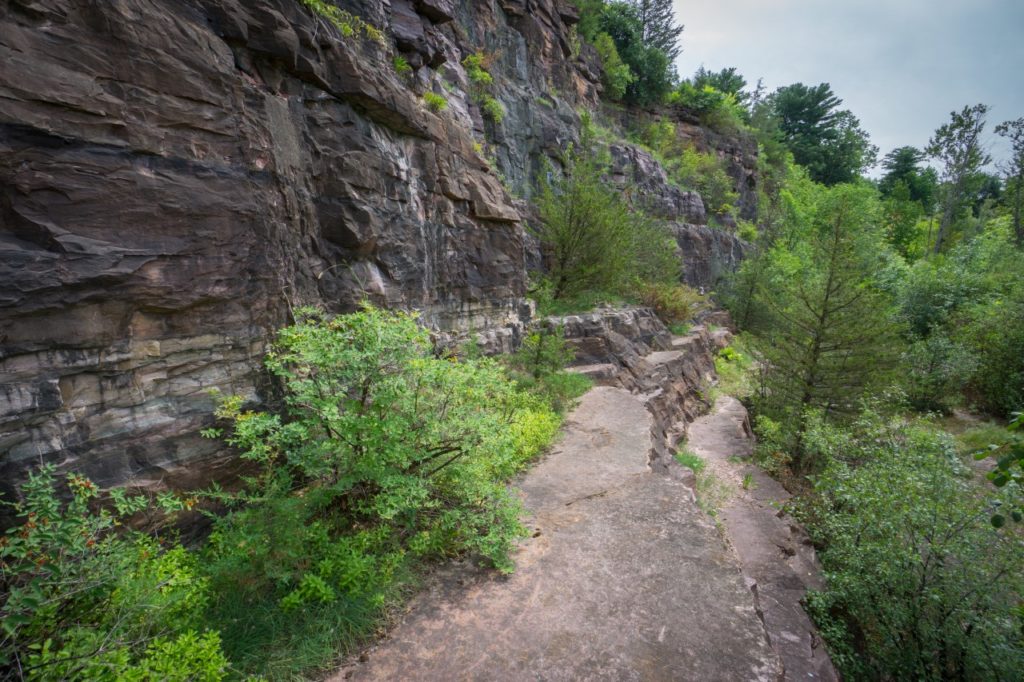Getting to Know Your Natural Neighborhood
An Insider’s Perspective of Burlington’s UVM Natural Areas
Written By Ben Langton
Crouch down among the mass of invasive knotweed plants and you might find me. I spent much of my time there two summers ago, ripping roots out of the ground to be bagged and disposed of, only to have the plants regrow just as vigorously the following spring. You might say “Hi” or might not. Your dog might come up to me. Or you might continue jogging down the cool, damp forested trails ahead unbothered.
Such is the nature of Centennial Woods. A bridger of the wild and the human world, the student, the jogger, and the forager, a bustling neighborhood of its own variety. And then there are those like myself; the caretaker who works to monitor, support, and affirm the coexisting pieces and networks that make up this place.
I have come to know Centennial Woods quite well—its trails, history, natural features, curious landmarks, and its many personalities, from playful to inspiring to creepy. I have personally walked through just about every one of its 100+ acres, 65 of which are owned by the University of Vermont. For the past three years, I am privileged to have been the steward of UVM’s ten Natural Areas. Centennial Woods is, of course, one of them.
So, let’s get you introduced! There are about eight entrances to Centennial Woods, though the one off of East Ave is probably the most commonly used. The woods are surprisingly hilly with an extensive trail system. Most of this natural area is wooded, though there are a couple of open wetlands and fields, most notably where a section of powerlines cuts through the heart of the forest. There are also two streams that run through Centennial—the babbling Centennial Brook and its sister, Wool Pullery Brook, named such after a since-departed sheep operation upstream.

Walking along the trails, you may encounter peculiar relics that hint at Centennial Woods’ human-shaped past. For example, the charred remains of a long-ago burned-down rope tow for an old ski area. Or rusted barbed wire segments protruding from mature trees that once confined livestock. Or what is remaining of the systematic rows of white pines from a reforestation effort from long ago. I now realize that it is impossible to disconnect Centennial Woods’ human past from its current state. And every year, I find something new that retells a story about its past.
Aside from its human history, I have come to know and enjoy the best of Centennial Woods’ natural phenomena. Following along Centennial Brook to the east side runs my favorite trail through a pine-hemlock forest that stays cool all summer long. In autumn, a smattering of fly agarics, the classic toadstool fungi, pop up in a scattered array. Continuing north along that trail will lead to the meadow under the powerlines where wild raspberries and blackberries flourish. Though be warned, they are quite seedy. By mid-August, the meadow is bursting with pinks, whites, and yellows as the wildflowers here offer a pollinator free-for-all. And on sunny October afternoons, the red and sugar maples cast a fiery foliar glow from the canopy to the forest floor like a stained-glass cathedral ceiling.
Centennial Woods is not, however, the only UVM Natural Area in Burlington. Nestled within a South End neighborhood is Redstone Quarry, UVM’s smallest Natural Area. Only about two acres in size, Redstone Quarry’s current state is the result of nature reclaiming an old quarry that ceased operations almost 100 years ago. The “redstone” here is Monkton Quartzite, a reddish-purple rock that is commonly seen around the city used in foundations, mixed with pavement, or used to construct entire buildings, such as Redstone Hall on the UVM campus. To get to Redstone Quarry, turn onto Hoover Street and keep headed straight until you see the looming rock face ahead. There is a small lot on the right for vehicles. Though the trail system here is limited, Redstone Quarry is an ideal spot for meditation, exploration, and appreciation for the healing power of nature.

I like to think of Redstone Quarry as a patch of serenity within the City of Burlington. Early spring is my favorite time to visit. The March sun heats up the south-facing rock wall, creating the perfect sit spot conditions to warm your bones after a long winter.
Typically, the quarry is teeming with birds who swoop about from bush to bush in the vegetation growing overhead along the cliff face. By June, the pools of water scattered around the area have exploded with frogs and the wild chives growing here cover the rock floor in a purple-pink matrix. Redstone Quarry is an ecological success story right in our backyard; by transforming a large, barren pit into a thriving, diverse ecosystem, Redstone Quarry exemplifies resiliency and inspires hope in me through the determination of the natural world to heal its human-induced wounds.
In a culture of anthropocentrism, where we often think of nature as a separate entity, (indoor vs. outdoor, developed vs. wild) I challenge you deconstruct this narrative. Get to know your local natural area as if it were an extension of your own neighborhood. Introduce yourself and allow the land to introduce itself to you. Act with the intent to develop a relationship of reciprocity with the natural world. Get to know the things that live there, your natural neighbors—the trees, the animals, the bedrock—and see how they all support each other. How do they support you, too? And, just as importantly, how do you support them? What does that look like?
While you’re thinking about that on your next venture through Centennial Woods, be sure to keep an eye out for me, too. I’ll be out there somewhere monitoring trails, fixing planks, and fostering my own relationships within our natural neighborhood.
For more information about the UVM Natural Areas, including descriptions and directions to all ten UVM Natural Areas, visit our website at www.uvm.edu/environmentalprogram/uvm-natural-areas
